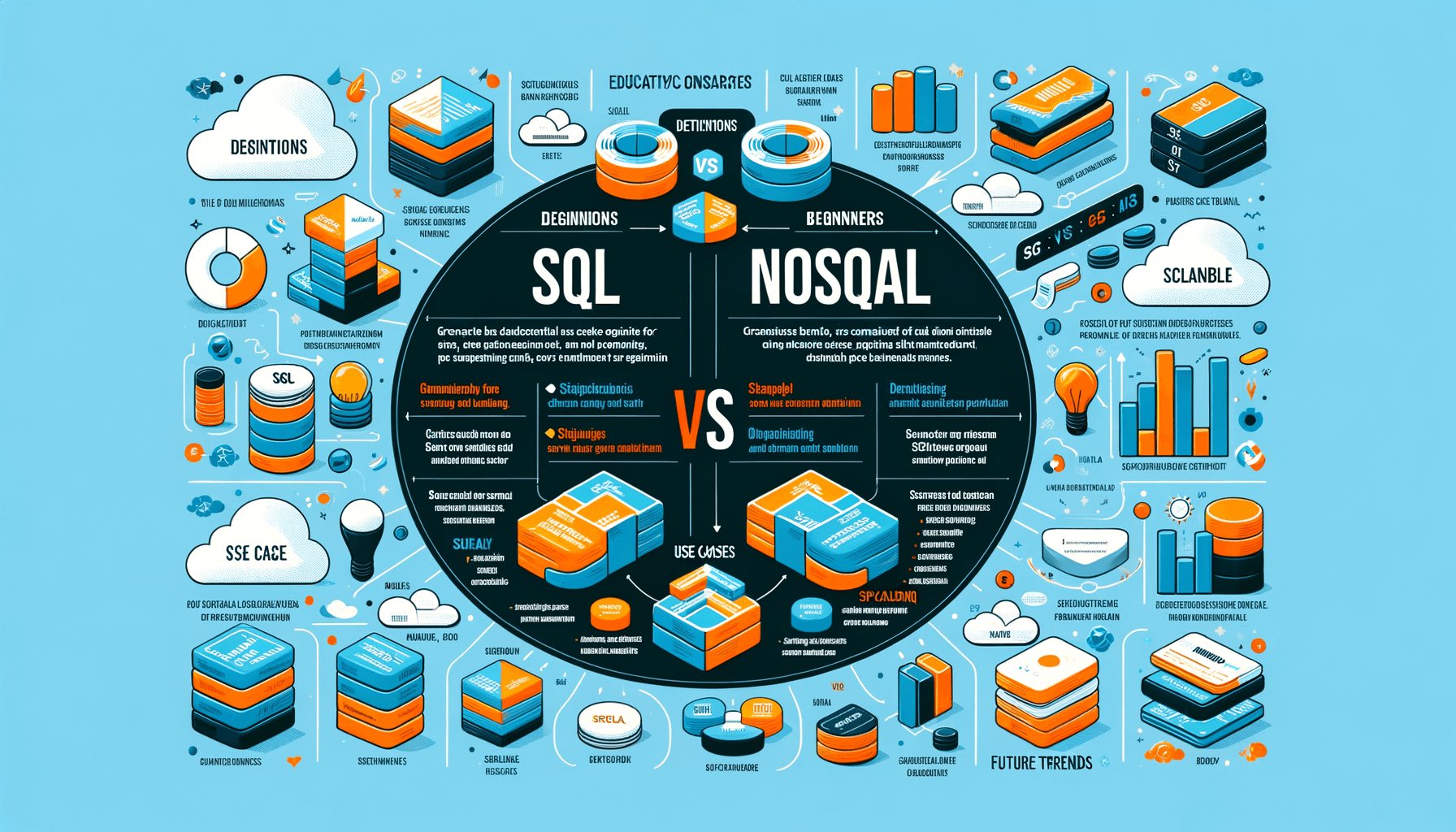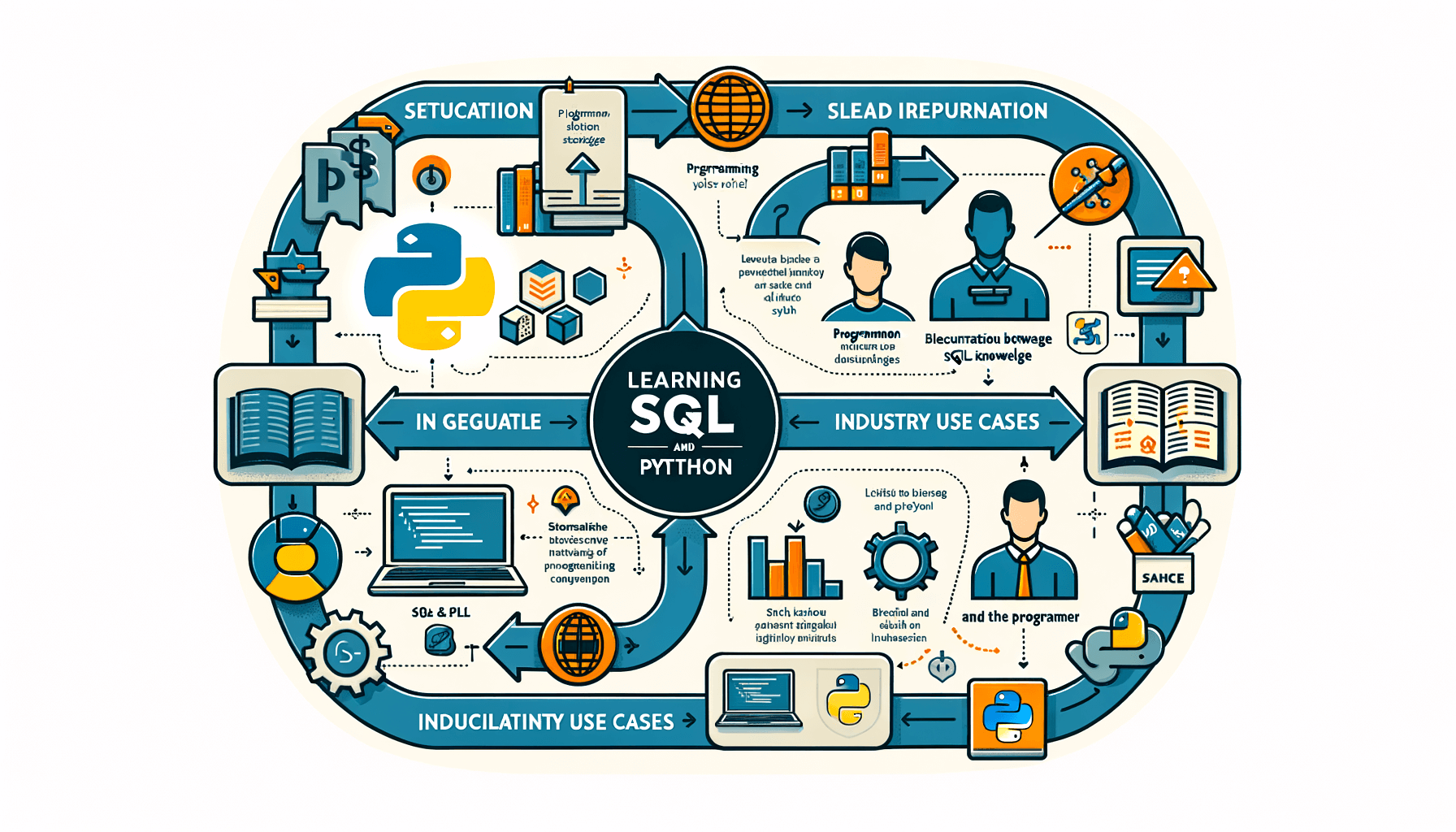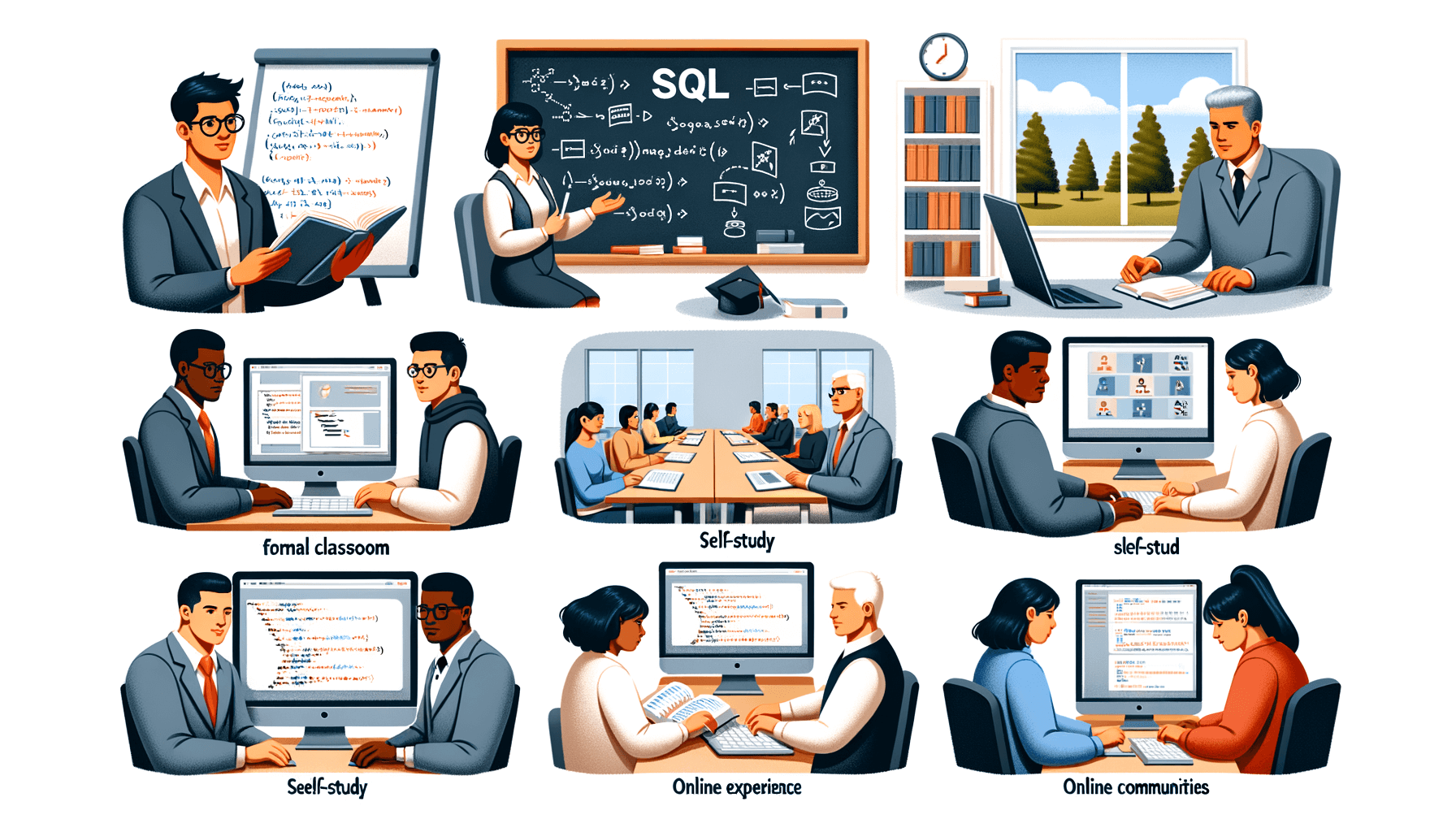A big variety of articles and resources

Should a newbie learn SQL or NoSQL?
 Sia Author and Instructor
Learn SQL
Sia Author and Instructor
Learn SQL
15 minute read
Choosing between SQL and NoSQL can be confusing for beginners. Both have their own strengths and weaknesses. This article will help you understand the differences and guide you in making the right choice.
Key Takeaways
- SQL databases are great for structured data and complex queries.
- NoSQL databases are flexible and handle large amounts of unstructured data.
- SQL has been around for a long time and is widely used in many industries.
- NoSQL is newer but is growing fast, especially for big data and real-time applications.
- Choosing between SQL and NoSQL depends on your specific needs and use cases.
Understanding SQL and NoSQL Databases
Definition of SQL Databases
SQL databases, also known as relational databases, use structured query language (SQL) for defining and manipulating data. They are built on a table-based schema, where data is organized into rows and columns. This structure makes it easy to perform complex queries and join operations. SQL databases are ideal for applications requiring multi-row transactions, such as accounting systems or customer relationship management (CRM) software.
Definition of NoSQL Databases
NoSQL databases, on the other hand, are designed to handle unstructured data. They do not rely on a fixed schema, allowing for more flexibility in data storage. NoSQL databases can be document-based, key-value pairs, wide-column stores, or graph databases. This makes them suitable for applications like real-time analytics, content management, and IoT data storage.
Key Differences Between SQL and NoSQL
The primary difference between SQL and NoSQL databases lies in their data models. While SQL databases use a structured, table-based format, NoSQL databases offer a variety of models to handle different types of data. Here are some key differences:
- Schema: SQL databases have a fixed schema, whereas NoSQL databases have a dynamic schema.
- Scalability: SQL databases scale vertically, while NoSQL databases scale horizontally.
- Transactions: SQL databases support ACID (Atomicity, Consistency, Isolation, Durability) transactions, making them reliable for multi-step operations. NoSQL databases, however, prioritize availability and partition tolerance over consistency.
Understanding these differences can help us choose the right database for our specific needs, whether it's for structured or unstructured data.
Historical Context and Evolution
Origins of SQL Databases
SQL databases have been around since the 1970s. They were created to help businesses manage large amounts of data. The main idea was to use tables to store data in a structured way. This made it easier to find and use the data when needed. Over time, SQL databases became very popular because they were reliable and easy to use.
Emergence of NoSQL Databases
NoSQL databases came about in the early 2000s. They were designed to handle different types of data that SQL databases couldn't manage well. For example, NoSQL databases can store data in documents, graphs, or key-value pairs. This flexibility made them a good choice for modern applications that need to process large amounts of unstructured data.
Technological Advancements
Both SQL and NoSQL databases have seen many improvements over the years. For SQL databases, new features have been added to make them faster and more secure. NoSQL databases have also evolved, with better tools for managing and analyzing data. These advancements have made both types of databases more powerful and easier to use.
Understanding the history of SQL and NoSQL databases helps us appreciate their strengths and weaknesses. This knowledge is crucial for making informed decisions about which type of database to use for different projects.
Data Modeling Approaches
Relational Data Modeling
Relational data modeling is the backbone of SQL databases. It organizes data into tables, which are linked by relationships. This method is highly structured and follows a strict schema. This approach ensures data integrity and reduces redundancy. It's ideal for applications that require complex queries and transactions.
Document-Oriented Data Modeling
Document-oriented data modeling is a key feature of NoSQL databases. Instead of tables, data is stored in documents, often in JSON or BSON format. This model is more flexible and can handle unstructured data. It's perfect for applications that need to store diverse data types and evolve quickly.
Other NoSQL Data Models
NoSQL databases also offer other data models like key-value, column-family, and graph. Each model has its own strengths and is suited for specific use cases. For example, key-value stores are great for caching, while graph databases excel in handling relationships between entities.
When choosing a data model, consider the nature of your data and the requirements of your application. The right choice can make a significant difference in performance and scalability.
Use Cases and Applications
Common Use Cases for SQL
SQL databases are often used in scenarios where data integrity and complex querying are essential. For instance, they are the backbone of many financial systems, where accuracy and reliability are crucial. Additionally, SQL is widely used in customer relationship management (CRM) systems, where structured data and relationships between different data points are important.
Common Use Cases for NoSQL
NoSQL databases shine in situations that require flexibility and scalability. They are commonly used in big data applications, where the ability to handle large volumes of unstructured data is a must. Social media platforms, for example, rely on NoSQL databases to manage vast amounts of user-generated content. Another common use case is in real-time analytics, where quick data retrieval and processing are vital.
Industry-Specific Applications
Different industries have unique needs that make either SQL or NoSQL a better fit. In healthcare, SQL databases are often used to manage patient records due to their need for structured data and compliance with regulations. On the other hand, e-commerce platforms might prefer NoSQL databases for their ability to handle diverse data types and scale quickly during peak shopping seasons.
When choosing between SQL and NoSQL, it's important to consider the specific requirements of your project. Each type of database has its strengths and weaknesses, making them suitable for different applications.
Scalability and Performance
Vertical vs Horizontal Scaling
When we talk about scaling databases, we often refer to two main methods: vertical and horizontal scaling. Vertical scaling involves adding more power to an existing machine, like upgrading the CPU or RAM. On the other hand, horizontal scaling means adding more machines to handle the load. Horizontal scaling is often preferred for NoSQL databases because it allows for easier distribution of data across multiple servers.
Performance Considerations
Performance is a critical factor when choosing between SQL and NoSQL databases. SQL databases are known for their strong consistency and complex query capabilities, which can be beneficial for applications requiring precise data integrity. However, NoSQL databases often excel in performance for large-scale applications due to their ability to handle massive amounts of unstructured data efficiently. It's essential to consider the specific needs of your application when evaluating performance.
Real-World Examples
In real-world scenarios, both SQL and NoSQL databases have proven their worth. For instance, e-commerce platforms often use SQL databases for transaction management and inventory control, while social media sites might opt for NoSQL databases to manage user-generated content and interactions. The choice between SQL and NoSQL can significantly impact the scalability and performance of your application.
When deciding on a database, it's crucial to weigh the pros and cons of each type. Understanding the strengths and weaknesses of both SQL and NoSQL can help you make an informed decision that aligns with your project's goals.
Learning Curve and Resources
Ease of Learning SQL
When starting with SQL, many find it straightforward due to its structured nature. SQL uses a clear syntax that resembles everyday language, making it easier for beginners to grasp. SQL basics can be learned quickly, allowing you to start working with databases in no time. Additionally, there are numerous online courses and tutorials that fit data & SQL skills into your busy life with our micro-courses.
Ease of Learning NoSQL
NoSQL databases, on the other hand, can be a bit more challenging for newcomers. The lack of a standard query language means that each NoSQL database might have its own way of handling data. This can be confusing at first, but once you get the hang of it, NoSQL offers great flexibility. Beginners might need to spend more time understanding the different types of NoSQL databases and their specific use cases.
Educational Resources
There are plenty of resources available for both SQL and NoSQL. For SQL, you can find a wide range of books, online courses, and tutorials. Websites like Khan Academy and Coursera offer comprehensive courses that cover everything from the basics to advanced topics. For NoSQL, resources are also abundant, though they might be more specialized. Platforms like MongoDB University provide targeted courses to help you master NoSQL databases. Whether you prefer reading, watching videos, or hands-on practice, there's something out there for everyone.
Learning SQL or NoSQL depends on your needs and how you prefer to learn. Both have their own set of challenges and rewards, but with the right resources, you can master either one.
Community and Ecosystem
SQL Community Support
The SQL community is vast and well-established, offering a wealth of resources for learners and professionals alike. From online forums to local meetups, there's no shortage of places to seek help and share knowledge. This strong community support can be a significant advantage for those new to SQL.
NoSQL Community Support
While the NoSQL community may not be as large as the SQL community, it is rapidly growing. Many NoSQL databases have active forums, GitHub repositories, and dedicated Slack channels. This makes it easier for newcomers to find the help they need.
Ecosystem and Tooling
Both SQL and NoSQL have robust ecosystems, but they differ in their tooling. SQL benefits from decades of development, resulting in mature and reliable tools. NoSQL, on the other hand, offers more modern and flexible tools that can adapt to various needs. Choosing the right tools often depends on the specific requirements of your project.
Security and Compliance
Security Features in SQL
When it comes to security, SQL databases have a long history of robust features. These databases often include built-in mechanisms for authentication, authorization, and encryption. Authentication ensures that only authorized users can access the database, while authorization controls what actions those users can perform. Encryption protects data both at rest and in transit, making it harder for unauthorized parties to access sensitive information.
Security Features in NoSQL
NoSQL databases also offer a range of security features, though they can vary widely between different systems. Many NoSQL databases provide support for authentication and authorization, similar to SQL databases. However, the level of built-in security can differ, so it's crucial to evaluate each system's capabilities. Some NoSQL databases also offer encryption, but it may not be as comprehensive as what is available in SQL databases.
Compliance Considerations
Compliance is another critical factor when choosing between SQL and NoSQL databases. SQL databases often come with features that make it easier to comply with regulations like GDPR, HIPAA, and SOX. These features can include audit logs, data masking, and role-based access controls. NoSQL databases can also meet compliance requirements, but it may require additional configuration and third-party tools. Therefore, understanding the specific compliance needs of your project is essential for making an informed decision.
In summary, both SQL and NoSQL databases offer various security and compliance features, but the extent and ease of implementation can differ. It's important to carefully assess your specific needs and the capabilities of each type of database to ensure that you choose the best option for your project.
Cost and Maintenance
Cost of SQL Solutions
When considering SQL solutions, the initial setup can be quite expensive. This includes licensing fees, hardware costs, and the need for skilled personnel. However, the long-term costs can be more predictable, as SQL databases often have established pricing models.
Cost of NoSQL Solutions
NoSQL solutions can be more cost-effective initially, especially with open-source options. However, as the system scales, costs can increase due to the need for more servers and maintenance. It's important to consider the total cost of ownership over time.
Maintenance Requirements
Maintaining SQL databases typically requires a dedicated team of database administrators. They handle tasks like backups, updates, and performance tuning. On the other hand, NoSQL databases can be easier to maintain initially but may require more effort as they grow in complexity.
Choosing between SQL and NoSQL involves weighing the initial and ongoing costs, as well as the maintenance needs of each system. It's crucial to consider both the short-term and long-term implications for your specific use case.
Future Trends and Predictions
Future of SQL Databases
SQL databases have been around for decades, and they continue to evolve. One of the key trends we see is the integration of machine learning capabilities directly into SQL databases. This allows for more advanced data analysis and predictive modeling without needing to export data to separate tools. Additionally, cloud-based SQL solutions are becoming more popular, offering scalability and flexibility that on-premises solutions can't match.
Future of NoSQL Databases
NoSQL databases are also rapidly evolving. We expect to see more hybrid models that combine the strengths of both SQL and NoSQL. This means better support for complex queries and transactions while maintaining the flexibility and scalability that NoSQL is known for. Another trend is the increasing use of NoSQL databases in real-time applications, such as online gaming and financial services, where speed and performance are critical.
Emerging Technologies
The database landscape is continually changing, with new technologies emerging all the time. One exciting development is the rise of graph databases, which excel at handling complex relationships between data points. These are particularly useful in social networks, recommendation engines, and fraud detection systems. Another area to watch is the integration of blockchain technology with databases, offering enhanced security and transparency for transactions.
As we look to the future, it's clear that both SQL and NoSQL databases will continue to play vital roles in the data ecosystem. The key will be to choose the right tool for the job, leveraging the strengths of each to meet specific needs.
Decision-Making Framework
When deciding whether to learn SQL or NoSQL, we should consider several important factors. Understanding our specific needs is crucial, as different databases serve different purposes. Here are some key points to think about:
- Project Requirements: What type of data will we be working with? Is it structured or unstructured?
- Scalability Needs: Do we expect our data to grow significantly? If so, we might lean towards NoSQL for its horizontal scaling capabilities.
- Community Support: SQL has a long-standing community, while NoSQL is rapidly growing. We should evaluate which community can provide better support for our learning journey.
| Factor | SQL | NoSQL |
|---|---|---|
| Data Structure | Structured | Unstructured |
| Scalability | Vertical | Horizontal |
| Learning Curve | Moderate | Varies |
| Community Support | Established | Emerging |
In addition, we can look at educational resources available for both. For instance, a free course: jumpstart sql offers introductory lessons that have received high praise for their practicality and comprehensive content, making it a great starting point for beginners in SQL.
Ultimately, the choice between SQL and NoSQL should align with our project goals and personal learning preferences. We must weigh the pros and cons carefully to make an informed decision.
When it comes to making decisions, having a solid framework can make all the difference. Our courses are designed to help you develop the skills you need to make informed choices in your career and personal life. Ready to take the next step? Visit our website to explore our course offerings and find the perfect fit for you.
Conclusion
In summary, deciding whether to learn SQL or NoSQL depends on your goals and the type of projects you want to work on. SQL is great for structured data and complex queries, making it a solid choice for many traditional applications. On the other hand, NoSQL offers flexibility and scalability, which is ideal for handling large amounts of unstructured data. Both have their strengths and can be valuable skills to have. As a newbie, consider what kind of data you will be working with and choose the database that best fits your needs. Remember, learning both can give you a broader understanding and make you more versatile in the tech world.
Frequently Asked Questions
What is SQL?
SQL stands for Structured Query Language. It's a language used to manage and organize data in relational databases.
What is NoSQL?
NoSQL stands for Not Only SQL. It's a type of database that can store and retrieve data in ways other than the traditional table structures found in relational databases.
Which is easier to learn, SQL or NoSQL?
SQL is often considered easier to learn for beginners because it has a more straightforward, standardized query language. NoSQL can be more complex due to its variety of database types and models.
Can I use SQL and NoSQL together?
Yes, many companies use both SQL and NoSQL databases together to take advantage of the strengths of each type.
What are common use cases for SQL?
SQL is commonly used for applications that require complex queries and transactions, like banking systems, customer relationship management (CRM) software, and enterprise resource planning (ERP) systems.
What are common use cases for NoSQL?
NoSQL is often used for big data and real-time web applications, like social networks, online gaming, and content management systems.
Is NoSQL faster than SQL?
NoSQL can be faster than SQL for certain tasks, especially when dealing with large volumes of unstructured data. However, SQL databases are often faster for complex queries and transactions.
What should I consider when choosing between SQL and NoSQL?
You should consider factors like the type of data you are working with, the complexity of your queries, scalability needs, and the specific requirements of your project.
Related Articles

Can a programmer master SQL in a week?
13 minute read

Do I still need to learn SQL if I already know Python?
13 minute read

How did you learn SQL? Did you have a teacher?
14 minute read




